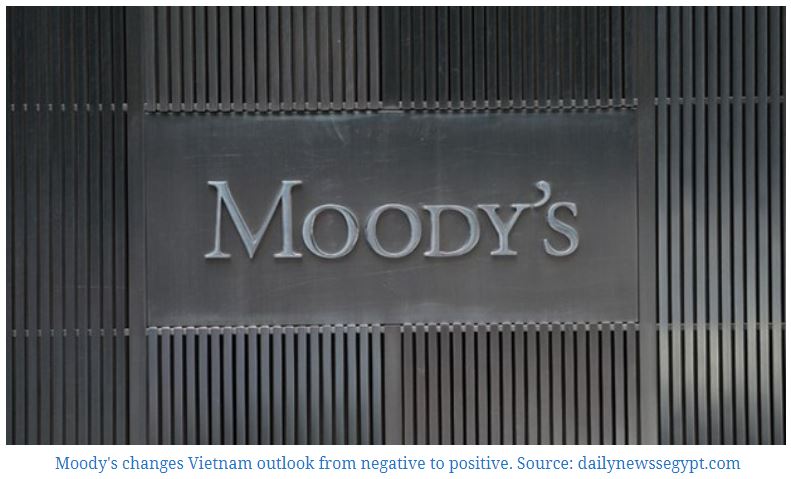Moody changes Vietnam’s outlook to positive
The drivers of the positive outlook include signs of improvements in fiscal strength and potential improvements in economic strength that may strengthen Vietnam’s credit profile over time.
Moody’s Investors Service on March 18 affirmed the Government of Vietnam’s long-term issuer and senior unsecured ratings at Ba3 and changed the outlook to positive from negative.
“The drivers of the positive outlook include signs of improvements in fiscal strength and potential improvements in economic strength that may strengthen Vietnam’s credit profile over time,“ noted Moody’s in a statement.
Sustained fiscal consolidation has led to improvements in fiscal and debt metrics, which Moody’s expects to be only briefly interrupted by the pandemic. Moreover, Vietnam’s economic strength may benefit from global shifts in production, trade and consumption following the coronavirus pandemic and support Vietnam’s economy. Over time, indications of higher fiscal and economic strength may point to improving policy effectiveness, also putting upward pressure on Vietnam’s credit profile.
Meanwhile, Moody’s has determined that the drivers of the previous negative outlook assigned in December 2019 have receded. The negative outlook, which followed a review for downgrade, related to the risks posed to Vietnam’s credit profile from administrative failures leading to payment delays on government guaranteed debt. In Moody’s assessment, the government has enhanced administrative scrutiny on forthcoming payments. Moody’s will continue to monitor the practices and systems that the government is putting in place to ensure timely payment of direct and indirect obligations.
The affirmation of the Ba3 rating is underpinned by ongoing credit strengths and weaknesses, including a large, diversified economy with high growth potential offering resilience to shocks, and increasing capacity in the domestic financial system to finance government borrowing at low costs. At the same time, ongoing risks stem from persistent governance weaknesses related to the lack of transparency of the management of state-owned enterprises (SOEs) and lingering risks in the banking system.
Vietnam’s local- and foreign-currency ceilings are unchanged at Baa3 and Ba2, respectively. The Baa3 local currency ceiling, three notches above the sovereign rating, reflects relatively opaque government decision-making and the significant – albeit shrinking – government footprint in the economy, balanced by moderate political risks and low external imbalances. The foreign currency ceiling at Ba2, two notches below the local-currency ceiling, reflects constraints to capital flows that point to possible transfer and convertibility restrictions being imposed at times of perceived need.
Source: http://hanoitimes.vn/moody-changes-vietnams-outlook-to-positive-316714.html


 Thailand
Thailand




